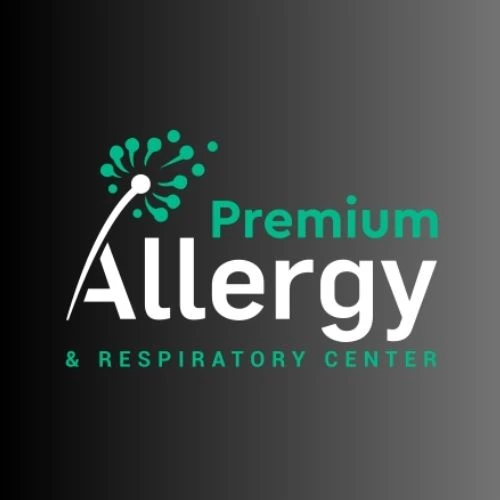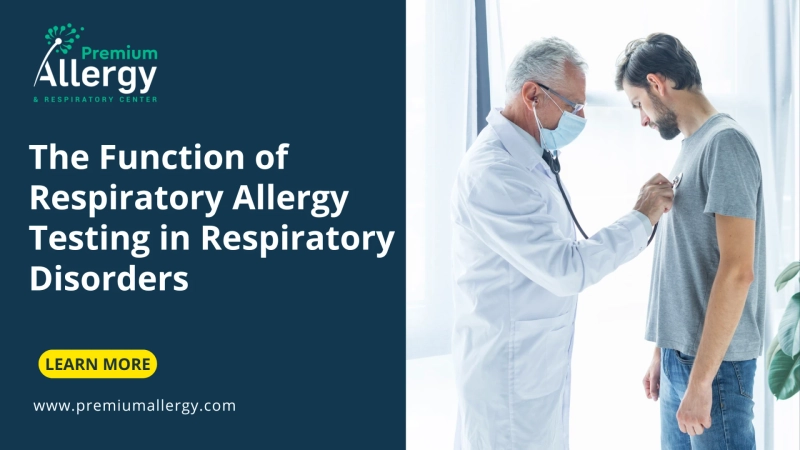Respiratory therapy is a complex and interdisciplinary science. It includes the treatment, diagnosis, and care of respiratory diseases. It includes diseases like asthma, COPD, and allergic rhinitis. Allergic testing is required in respiratory medicine, which helps healthcare professionals identify individual allergies that result in respiratory symptoms, resulting in a good patient outcome. In this blog, we will talk about the significance of respiratory allergy testing, the variety of allergic tests utilized, and how they assist in diagnosis, treatment, and enhancing patient outcomes.
Types of Allergy Tests Used in Respiratory Care
Allergy testing is also a fundamental area of respiratory care as it enables health professionals to identify specific allergens that cause respiratory symptoms. Different types of allergy tests exist in respiratory care, and each has set of guidelines, merits, and demerits.
Skin Prick Testing: Procedure and Benefits
Skin prick test is a routine allergy test in which an allergen is pricked on the skin in very small amounts to observe the body's response to it. The test lasts only 15-30 minutes and is very sensitive.
Advantages of skin prick testing include:
- High specificity and sensitivity for the detection of IgE-mediated allergy.
- Quick results, and thus diagnosis and treatment can be started right away.
- Option to test for many allergens simultaneously.
- Reasonably inexpensive in comparison with other allergy tests.
Blood Testing: Benefits and Drawbacks
Blood testing, or in vitro testing, is defined as testing blood for the quantity of IgE antibody to known allergens. The benefits of testing through the blood are as follows:
- Capability to test allergies on patients with skin conditions or dermatographias.
- There is no chance of anaphylaxis since the allergen is not inserted into the body.
- It can be applied to patients who cannot be skin-prick tested.
But blood testing also has its limitations:
- Less sensitive and specific than skin prick testing.
- More expensive than skin prick testing.
- Worse, it is not expected to be used to test for non-IgE-mediated allergies.
Patch Testing: Uses and Applications
Patch testing is a method in which a minute quantity of an allergen is applied to the skin and subsequently the response is gauged for a couple of days. Patch testing is widely used for the diagnosis of contact dermatitis and other skin ailments.
Patch testing is used for the following purposes and applications:
- Diagnosis of contact dermatitis and other skin diseases.
- For identifying the causative allergens of skin symptoms.
- For non-IgE-mediated allergy tests.
Advantages of Allergy Testing in Respiratory Care
Respiratory allergy testing is crucial in respiratory care because it enables health providers to determine the specific allergens responsible for respiratory symptoms. The advantages of allergy testing in respiratory care are:
- Better symptoms and quality of life: By removing and avoiding specific allergies, patients will be able to improve their symptoms and quality of life. Allergic tests enable doctors to design treatment plans without exposing patients to allergies, reducing the risk of respiratory symptoms.
- Developing Effective Treatment Plans: Developing effective treatment schemes makes a clear understanding of the patient's respiratory state and allergies. Treatment plans are developed simultaneously by patients and health professionals.
- Better patient results with analog treatment: With allergic tests, targeted treatment plans can be developed that are aimed at the motivational agent of respiratory disease. With the identification and treatment strategies of motivational allergies, which are reduced by exposure to allergens, patients get better results, and complications can be minimized.
- Better treatment and diagnosis of respiratory disease: Allergic tests enable health care professionals to diagnose respiratory disease, such as allergic rhinitis and asthma in Fresno, and identify rhinitis and asthma, and identify objectionable allergies causing symptoms. From this information, health care can offer targeted therapy to manage underlying causes of professional respiratory symptoms.
Working with a Healthcare Professional to Develop a Treatment Plan
They can help develop treatment plans that include:
- Identifying specific allergies triggering respiratory symptoms.
- To develop a strategy to get in contact with allergies.
- Determining medicine or immunotherapy as required.
- Treatment options: avoidance, medicine, and immunotherapy.
Treatment for respiratory conditions involves:
- Medication: Administering medications such as antihistamines or corticosteroids to alleviate symptoms.
- Avoidance: Decreased contact with true allergens secondary to respiratory signs.
- Immunotherapy: Providing allergic shots or sublingual immunotherapy to patients to create immunity to accurate allergies.
Conclusion
Thus, the respiratory allergy testing is significant in the practice of respiratory care. It enables health practitioners to identify specific allergies responsible for respiratory symptoms. With the identification of varied respiratory allergic tests utilized in respiratory care, healthcare professionals can tailor individual treatment protocols that will deal with targeted causes of respiratory symptoms, and thus, it means improved patient outcomes.



